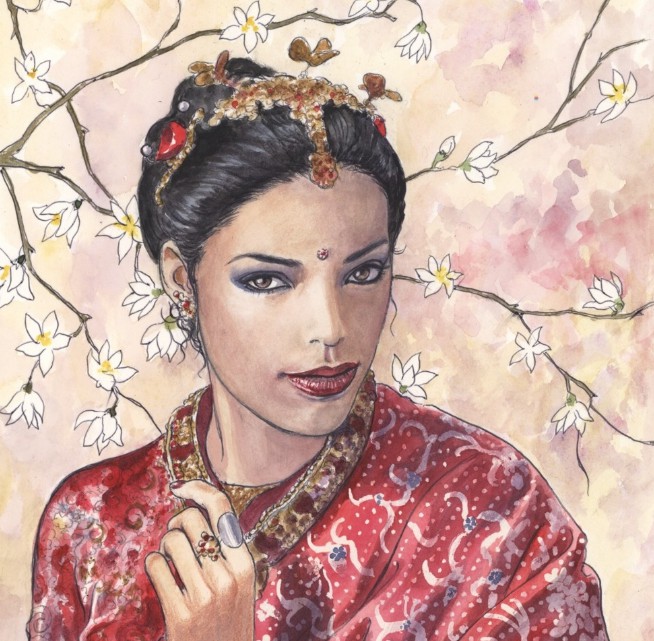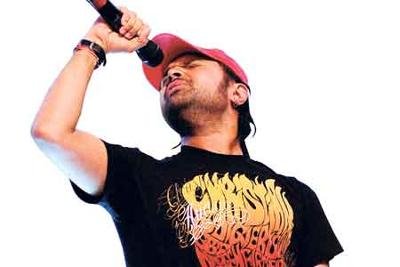The first thing everybody says about AR Rahman’s music is that it takes repeated listenings to dig it. That you don’t really “get” Rahman’s music unless you have listened to it over and over again.
Which is completely bollocks, let me tell you. Try listening to a godawful Anu Malik track over and over again 12 times, you will find out that it gets into your head, whether you like it or not. Which is why new releases have repeat airplay on TV and radio, the principle is that if you are bombarded with a bad song and you don’t have anywhere to escape, you will ultimately cave in and start humming it to yourself, and pretty soon you will be telling your friends what a good song Anu Malik composed for that latest Dharmesh Darshan film.
Why then, you might ask, do some songs grab your attention immediately? What makes a Harris Jayaraj song sound so hummable the first time you hear it? Why is Himesh Reshammiya so popular? I get you, I get you. Let me try and explain this in detail.
I huhuh thuhuh. Goddamn you, tandavdancer. I have a theory. Call it the earworm theory, if you will. What I say is, the most hummable songs, the ones that stick in your head the first time you hear them, the ones that sound so freaking catchy – they are piggybackers. They are the bastard children of familiar tunes. The effect they produce the first time is – “where have I heard this before?” Now, you would know, without having to tell you myself, how difficult it is to hum another song when one song is playing right in front of you. It’s even harder to think of a wisp of a melody as it floats by in a composition. What actually happens when you think of the song this new song reminds you of is – the new song sticks in your mind. Voila, instant earworm.
Easy example: Listen to Harris Jayaraj’s Vettaiyaadu Villaiyadu, if you haven’t already. The last song on that album – Neruppae – is so catchy it can give SuperglueTM a complex. Until you think about it and realise the tune is just a reworking of the middle portion of Aashiq Banaaya Aapne. That’swhat I mean by piggybacking.
Now, back to Rahman.
The deal with Rahman music is that most of it, the stuff that has stood the test of time, is music that does not really have a template from previous film music. You sure as hell hadn’t heard an acoustic guitar and claps and a growling bass – and those instruments only – backing Chitra’s voice, until you heard ‘Kannalanae’ (That’s ‘Kehna Hi Kya’ for you non-purists) in Bombay. You heard Shweta Shetty singing herself hoarse on TV channels, but did you really think she could pull off the kind of high-pitched vocal violence that Rahman subjected her to in ‘Mangta Hai Kya’? Fine, so Iruvar was based on 70’s MGR movies, but were you really prepared for the scat portion in ‘Hello Mr Ethirkatchi’?
Let me tell you a secret. These three songs I mentioned above? I hated all of them the first time I heard them.
Why can’t we love AR Rahman’s music the first time we hear it? Because we are minor mortals. Because we have limited attention spans and equally limited aural capabilities, rendered sterile by the kind of puerile sonic experiences we are subjected to in the name of music. Please note that the previous sentence was bereft of irony of any kind. It’s true, you know it.
This is how a Rahman track affects you. Don’t take my word for it, try it out yourself the next time an album comes out. Listen to the album once. Just once, oh well, alright, listen to it one more time if it makes you feel better. Forget that it’s Rahman music, treat it as a generic album that has come out and you are listening to it because your friend recommended it or because you have nothing else to do. The important thing is – don’t tell yourself you have to like it. That’s the first mistake a Rahman fan makes. This is music that has been laboured on for days and weeks, probably even months. You do it a disservice by treating it as a disposable bit of loopyheadedness. Hmm, a better analogy – would you gulp down a glass of vintage champagne? Of course not. You would take it in slowly, let it into your system in delicate little sips.
So there. You have listened to the album. Your work is done. Keep the CD aside. If you are listening to it on raaga.com, shut down the player and go to pandora.com or something. (You might also consider stabbing yourself with a blunt object. You listened to a Rahman album foir the first time on a dinky mono compressed version, you sick freak. You should be made to listen to Another Brick in the Wall in a Hyderabad pub. Especially when there are skimpily clad women around dancing Farah Khan steps to it. Sorry, I digress.) Get on with your life, because you have got better things to do.
Of course, you are free to go and read reviews about the music. Check out the buzz. Smile at the obsessive fanboyness of music-lovers across the world as they dissect the album. Half of them will say it’s the next best release after Dil Se, the rest will hate it with a vengeance. You don’t care.
Now comes the interesting part. By Day 2, there will be these bits and pieces echoing around in your head. Maybe a “miaow” will creep in just when you’re about to go to bed. Or a snatch of a piano riff that you frantically try to complete in your mind. You will try to hum some of them to yourself – maybe you will hear bits of it playing in a music shop, or your friend humming a bit of it. Some guy will write about how cool this middle part of track 2 is, and you will try and remember how that part sounded like.
Give yourself a week, if you are a strong man and can digest all of Grant Morrison’s Invisibles in one sitting. (To be frank, I can’t.) A week, and then go listen to the album again. Wipe away your tears as you realize how completely cool the album is, and how intricate the songs are, and how Rahman can cram each of his song with details that would make a lesser composer quail. Listen and learn.
And for heaven’s sake, don’t cringe at the back-cover.
To the anonymous commenter who left the link to the ‘New York Nagaram’ mp3 a couple of days ago, thank you. I bought the Jillanu Oru Kaadhal album as soon as I could, and indulged in a little social experiment with myself ( the part you read about above. You did read it, didn’t you?), the same thing I do with most Rahman albums, at least the ones which do not have infectious thumbi loops as part of their promos. I didn’t listen to ‘New York Nagaram’ for quite a long time, letting the lightheadedness of ‘Kummi Adi’ sink into my system. It has Thenni Kunjaramma in it, man. How long has it been since we heard the lady with the cutest cracked voice EVER? Taj Mahal was the last album in which she figured, right? And who is this Tanvi lady and how can she sound like three women on three renditions of the same line? How could Shreya Ghoshal produce such orgasmic moans without the musicians running out of the studio? Was Rahman watching Trigun when he thought of putting in the random miaows in the title song? Why does the female chorus on ‘Munbe Vaa’ give me goosepimples on every listen?
Excuse me while I ponder over such existentialist questions. Feel free to go buy Jillanu Oru Kaadhal, available in Rahman-friendly stores across the world.
** Music Theory. Go read Preacher already.


